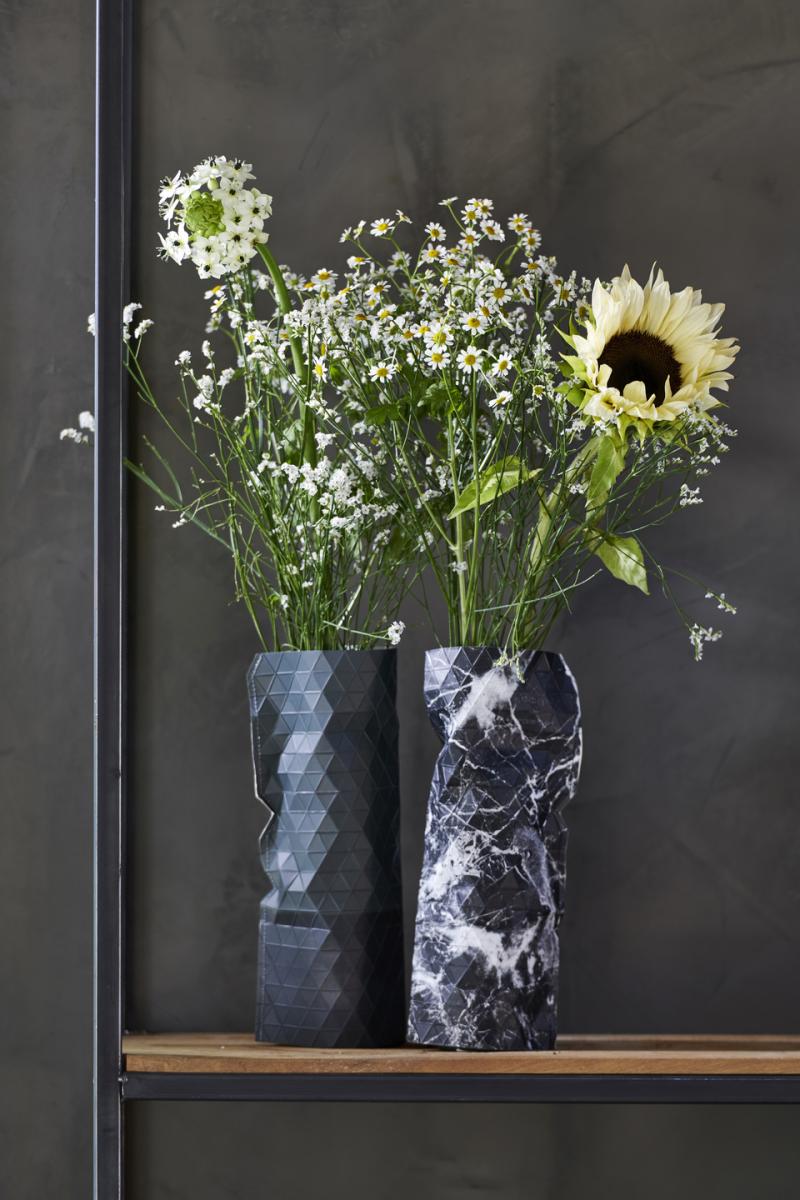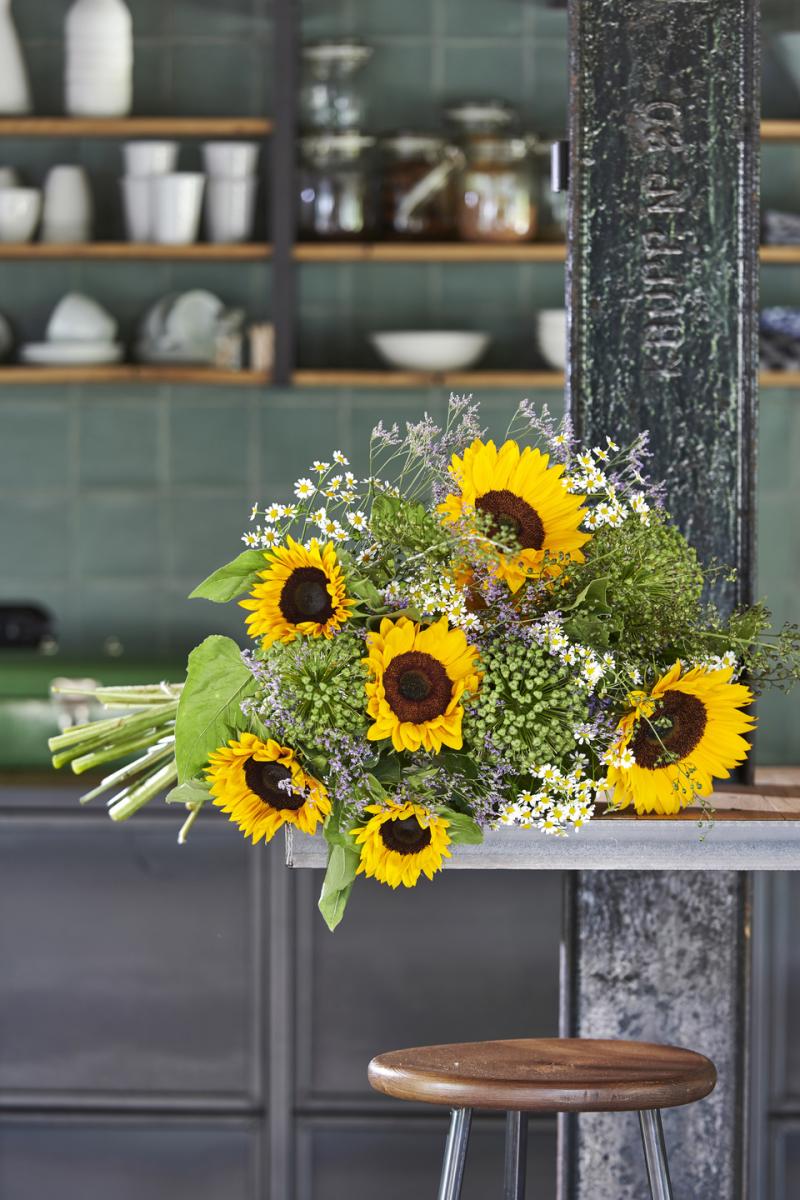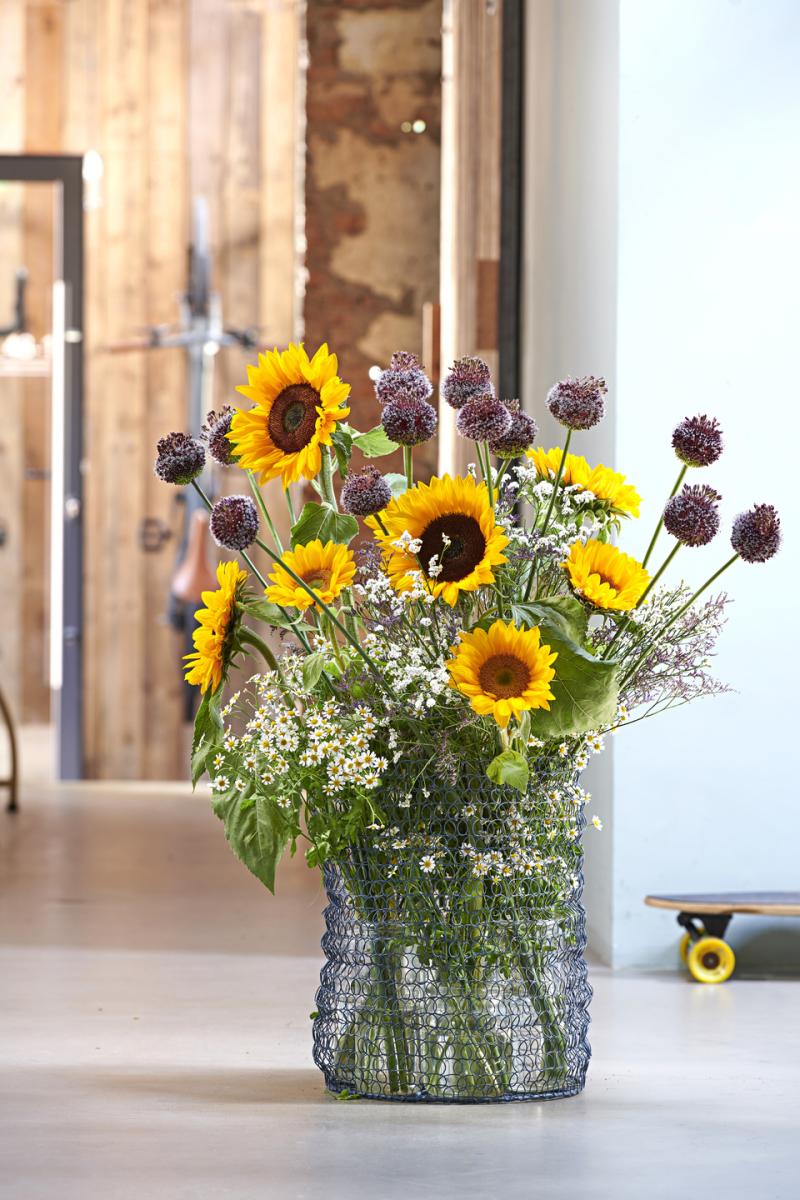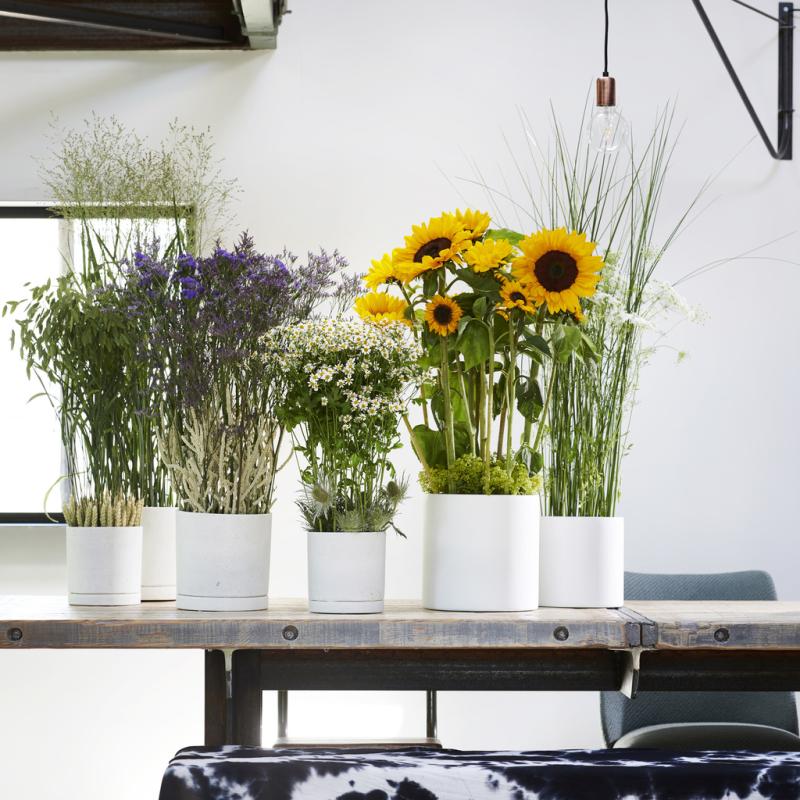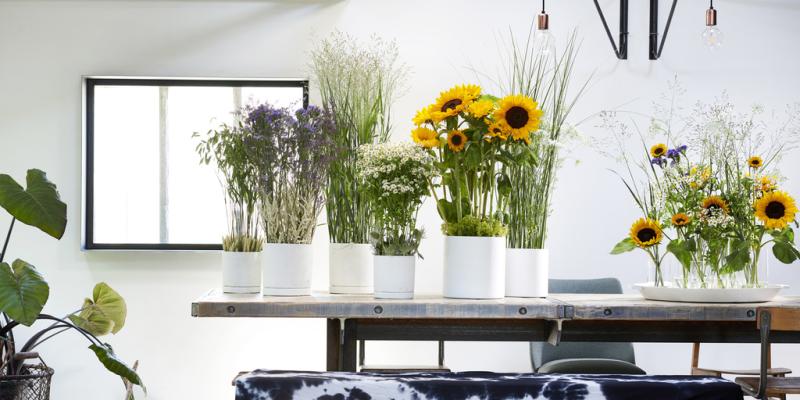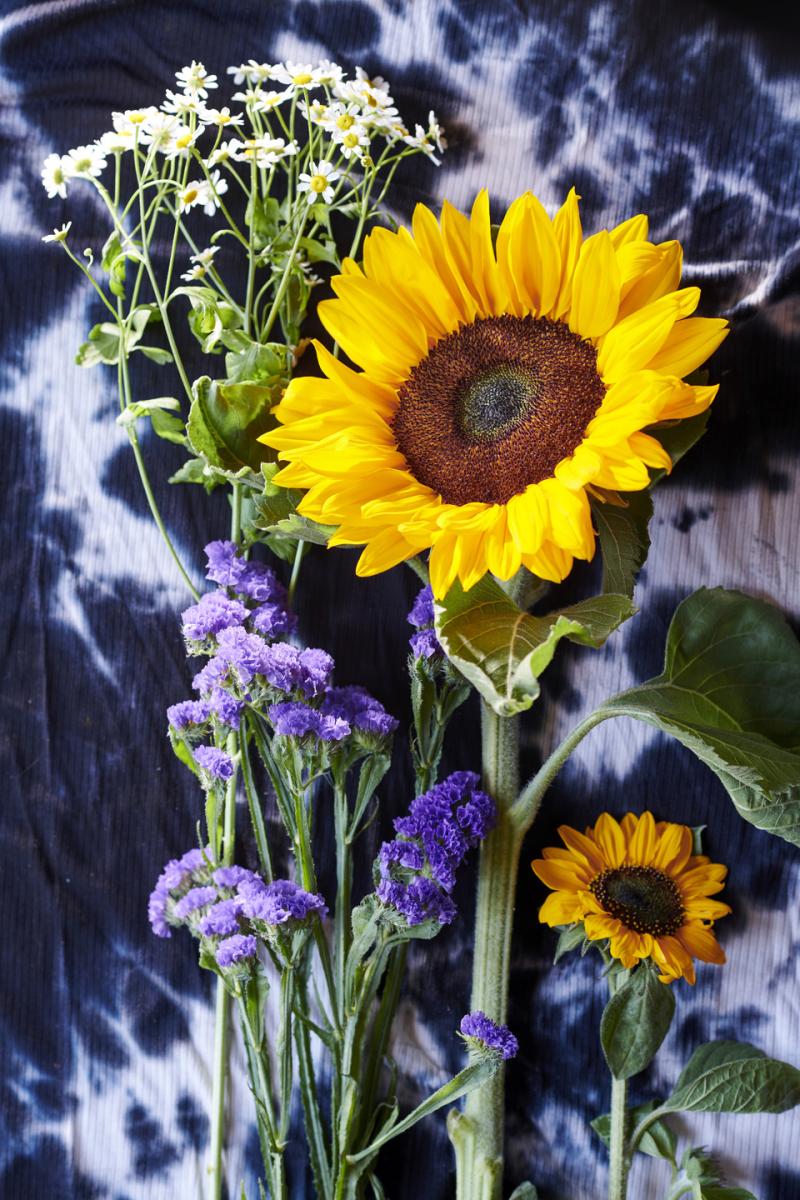Summer Flowers: in the July Flower Agenda
Radiant colours and appealing shapes: sunflower (Helianthus), feverfew (Tanacetum) and statice (Limonium bunatum) make up a versatile trio that provide exciting bouquets in terms of volume and shape and are also very suitable for airy rustic bouquets. The three of them are on the Flower Agenda because they represent sunshine, blooming fields and the sea: three things that are very much associated with summer. Summer flowers fit seamlessly with the interiors trend in which greenery and nature offer balance against the advancing technology in the home: in this case ‘smart’ goes together with ‘heart’.
Team Summer Flowers
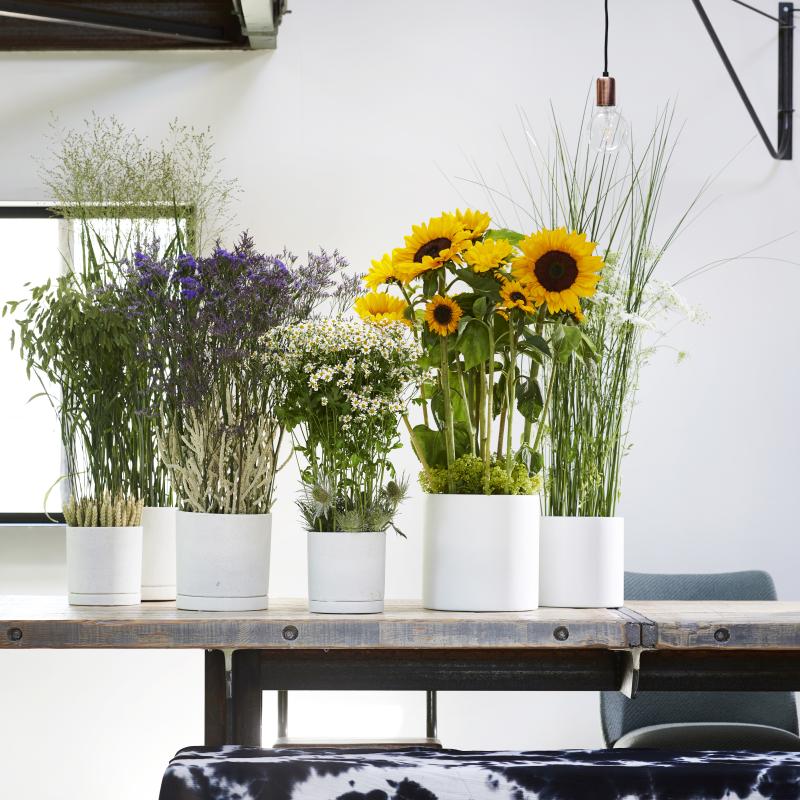
Feverfew has small white flowers and yellow heart. The flowers smell spicy, and the stems reach a maximum length of 60cm. This flower has a simple, natural look that is very fresh and gives the feeling of a meadow flower.
Statice is usually blue and sometimes yellow, lilac, pink or bicoloured. In the wild this flower grows on salt marshes and in areas affected by tides. It brings a seaside feel to a bouquet. This cut flower is also 50-60cm in length.
Origin
Our selection of summer flowers originate from North America and spread from there to South America and then came to Europe in 1530 with Spanish sailors. The flower is grown in order to produce sunflower oil or to harvest the seeds, in addition to being a classic summer cut flower. Feverfew is a member of the aster family and grows in south-east Europe. Statice originates from the Mediterranean area but is also native to countries in and around the Caucasus. The bred cut flower is more colourful and refined in structure than the flowers of the wild plant.
Assortment
Sunflowers like Vincent Van Gogh painted them - yellow petals with a dark heart - are the most popular offering, but there are also varieties with a yellow or brown heart and with lemon, orange or red petals. There are also some single-flowered and double-flowered varieties. There is even a sunflower with a flower that stands upright. Most sunflowers are not traded by name, but under the label of large or small-flowered. The most common cultivar is Helianthus ‘Sunrich Orange’.
Feverfew comes in single-flowered and double-flowered varieties in white and yellow, although there is also a dyed feverfew on the market. With single-flowered varieties the cut flower consists of a ring of white petals around a heart made up of tubular flowers. With some varieties the petals are absent, so that they look like compact balls. The foliage has a beautiful spicy fragrance.
Statice differs between Limonium cultivars and Limonium sinuatum. These are particularly sold under the name statice and offer bright colours whereby blue predominates. There are also pink, lilac and bicoloured varieties. Limonium cultivars also offer branching varieties filled with small flowers in shades of grey, blue or lilac.
What to look for when buying summer flowers
What is most important when buying is the ripeness of the flowers. With all three flowers the unripe specimens will droop more quickly, will last a shorter time in the vase, and also underperform in terms of colour intensity and size. Buying ‘raw’ is not a good idea in this case.
Care tips for professionals
• The use of preservatives is very important in the summer months in order to optimise the condition of these flowers during shipping, storage and retail.
• It is best to store the flowers in the cold store at a temperature of 4-5°C
• Ensure that the flowers cannot get damp due to excessive humidity in the cold store or from condensation in cellophane caused by temperature fluctuations. This will encourage botrytis, a fungus which rapidly diminishes the decorative value. With many summer flowers this is known as blight or grey mould.
Display tips for professionals
Because all summer flowers have fairly strong stems, they can be inserted in oasis for arrangements that gives an indoor garden effect. They are also very suitable for loose field bouquets, and for arrangements in which they are scattered across a number of different small vases. The display can be uncomplicated and a bit nonchalant, as is fitting for a carefree month like July.
Care tips for customers
• Trim the stem diagonally with a sharp knife.
• Use a clean (glass) vase and fill it with approx. 7 cm of tap water at room temperature.
• Always add cut flower food to the water for Sunflowers.
• A room temperature of no more than 20°C is ideal.
• Don't place Sunflowers in a draught, in direct sunlight or beside a fruit bowl.
• Regularly top the vase up with tap water: summer flowers are thirsty flowers.
Inspiration & information
Inspiring images of every flower on the Flower Agenda have been produced in line with the Horticulture Sector Trends 2019 (Groenbranche Trends 2019). These trends are a translation of the latest consumer trends and are specifically aimed at the horticulture sector for use both indoors and outdoors. If you would like to find out more about the Flower Agenda read more here.
Images for Summer Flowers
Summer Flowers will be in the Flower Agenda in July 2019. You can download and use these inspirational images free of charge if you credit Funnyhowflowersdothat.co.uk.
Instagram: @howflowersdothat
Facebook: @funnyhowflowersdothat
Twitter: @flowersdothat
Summer Flowers poster
You can download the poster using the link below.
A3 Summer Flowers Poster

